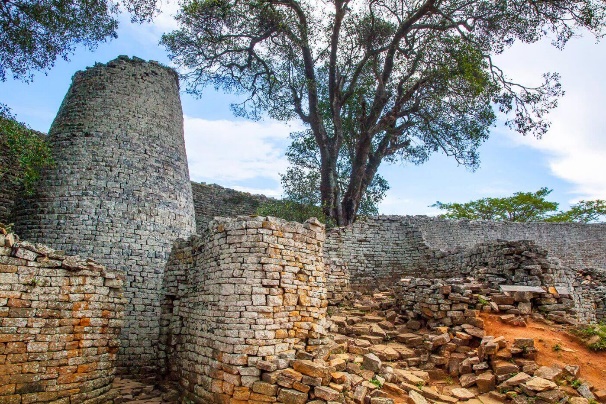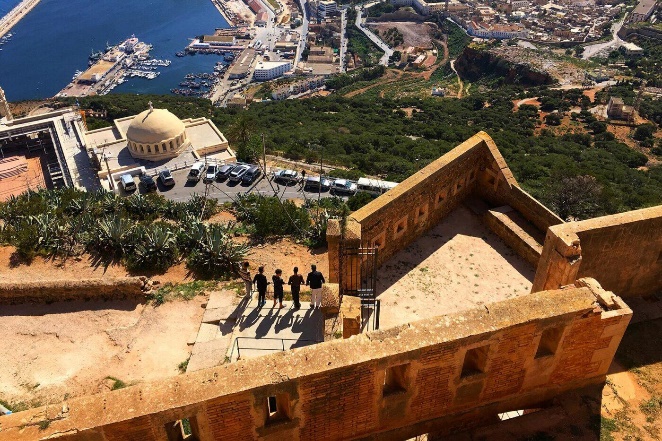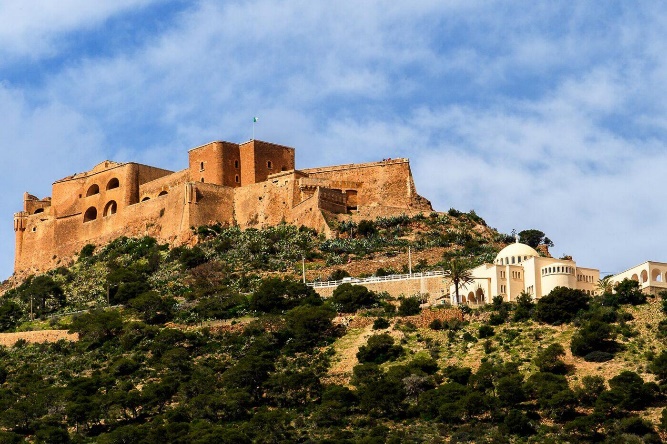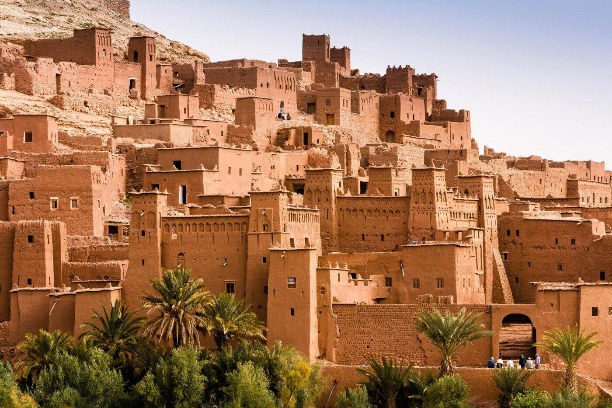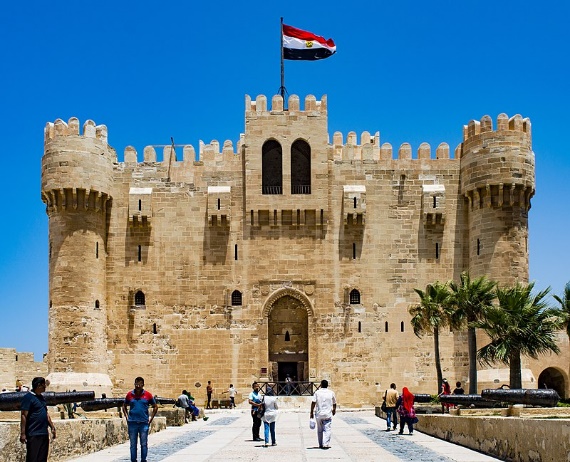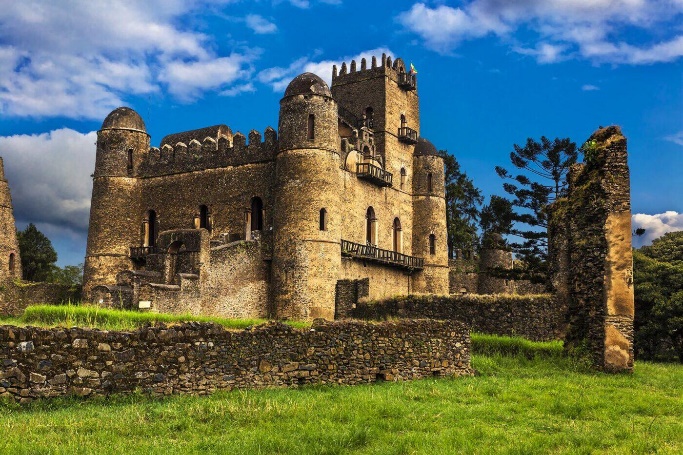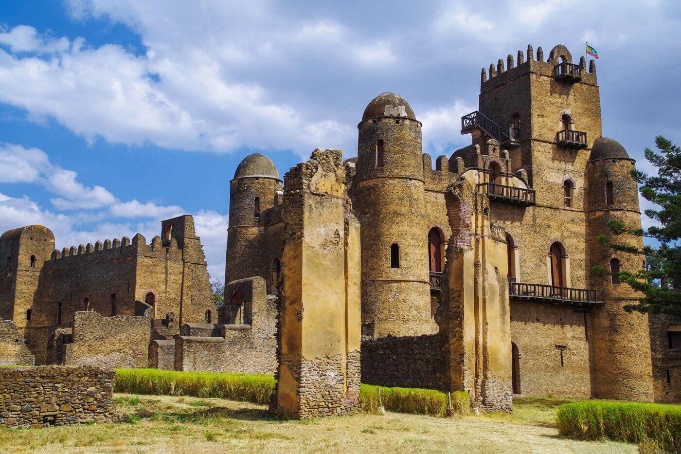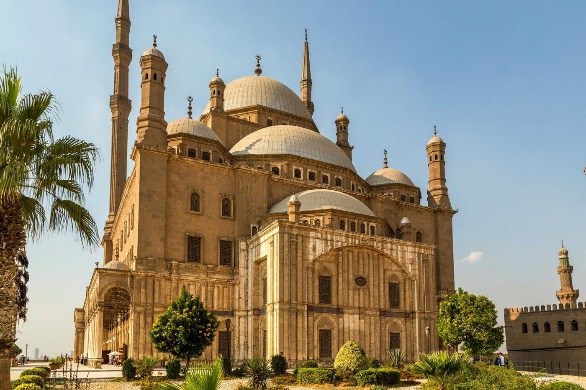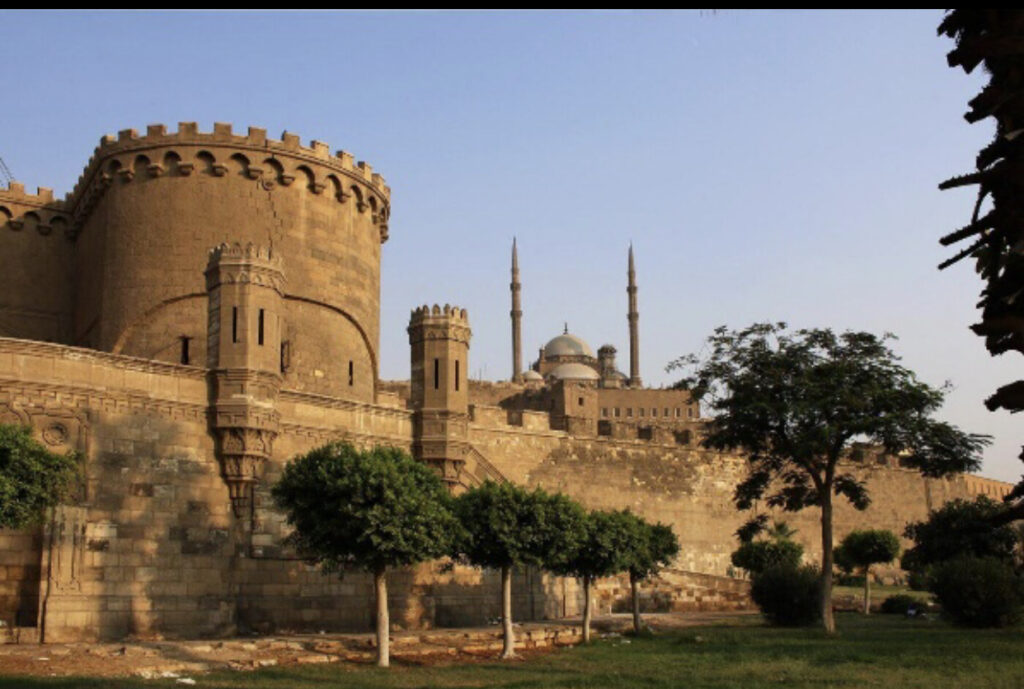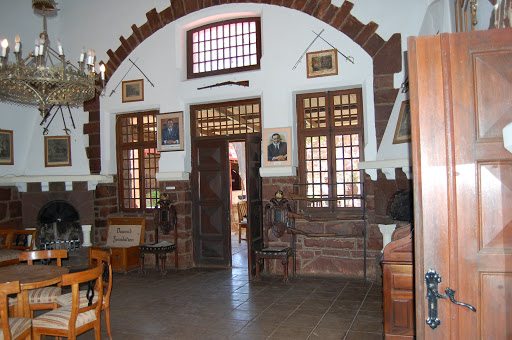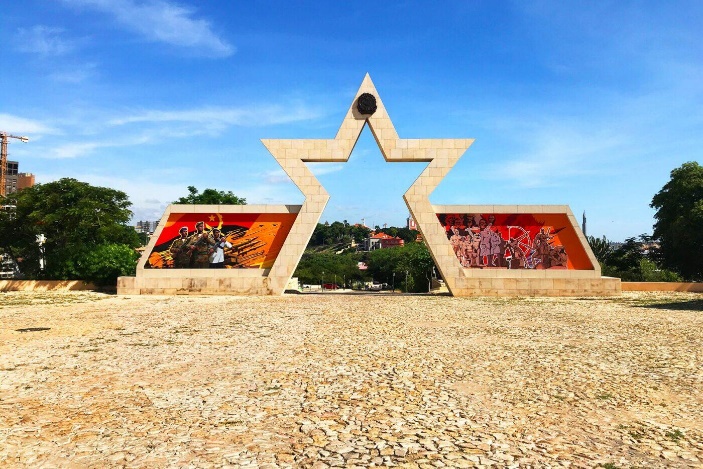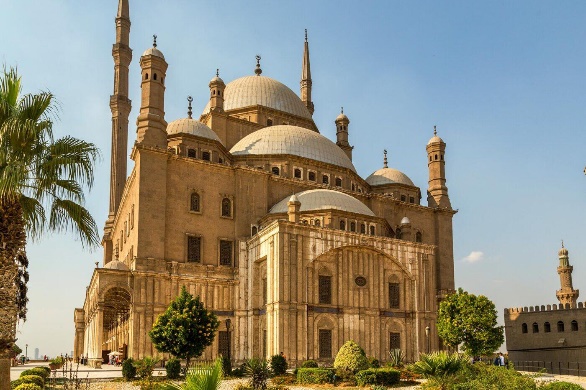
Avellon Williams
While one might think of Europe as the go-to place to see castles. There’s nothing quite like the history and beauty of African castles to explore. They may not be as “traditional” as their European counterparts, but they are as beautiful as anything in the world.
These thirteen (13) African castles from Egypt, Morocco, Tunisia, and Senegal are sure to intrigue those interested in architecture and history.
1- Great Zimbabwe in Masvingo Province, Zimbabwe
For at least 300 years, the Great Zimbabwe ruins were a center of trade in a royal city with a population of 18,000 people. In addition to its conical towers, balconies, and monolithic sculptures, the castle has a number of other features as well.
Great Zimbabwe was the heart of a thriving trading empire from the 11th to the 15th centuries, focusing on cattle husbandry, crop cultivation, and gold trade. Zimbabwe, the country’s name, is a Shona (Bantu) word that means “stone house.”
2- Fort Santa Cruz In Oran, Algeria
During the 16th century, the Spanish built the castle in Fort Santa Cruz to replace an Ottoman fort they destroyed.
There are two other forts in Oran, one at the western end of the port and one at the center, replacing the old castle of the Saints known in Spanish as Castillo de Los Santos.
In the Mediterranean Sea, on the Pic d’Aidour above the Gulf of Oran, the Spaniards built Fort Santa Cruz between 1577 and 1604 at an elevation.
3- Ribat Monastir In Monastir, Tunisia
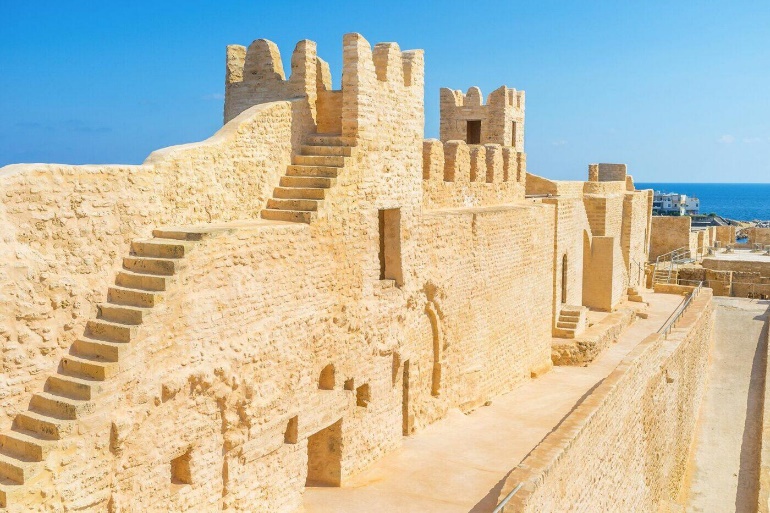
Founded in 796 by Harthama ibn A’yan, governor of Ifriqiya and leader of the Abbasid Caliphate, the Ribat Monastir is one of the most important Islamic monuments. Among the oldest of many fortifications built by Arab invaders in North Africa, the Tunisian ribat features Islamic art and architecture incorporated into its walls.
An approximately hundred-step spiral staircase leads to the watchtower where visual messages were exchanged with neighboring ribats at night. To accommodate the artillery, many watchtowers were built between the 11th and 13th centuries, as well as between the 17th and 19th centuries. Visitors can also climb the towers to enjoy views of the city and the beach.
4- Ksar of Ait Benhaddou In Ouarzazate Province, Morocco
In the 17th century, the Ksar of Ait Benhaddou was built in the foothills of the Atlas Mountains. Featuring high-angle towers and clay brick designs, the Ksar at Ait Benhaddou is one of the best remaining examples of southern Moroccan earthen architecture.
It is surrounded by defensive walls reinforced by angle towers and pierced by a baffle gate with houses – some modest, some resemble small urban castles with their high angle towers and clay brick motifs on the upper sections – but buildings and community spaces are also present.
A complete panorama of pre-Saharan earthen construction techniques can be seen in this extraordinary ensemble of buildings.5- Citadel of Qaitbay in Alexandria, Egypt.
To protect the city from invading Turks in the 1480s, the Citadel was built on the same spot as the Lighthouse of Alexandria, one of the seven wonders of the ancient world destroyed by earthquakes between the 11th and 14th centuries.
Not only in Egypt but also along the Mediterranean Sea coast, the Qaitbay Citadel is considered one of the most important defense strongholds. As a result of its formulation, Alexandria’s fortification system played an important role in the 15th century
Despite its age, Alexandria still has a lot of attractive sites and points of interest.
6- Fasilides Palace in the Fasil Ghebbi, Gondar, Ethiopia
This castle was constructed by Emperor Fasilidas in the 17th century, who loved architecture and incorporated Ethiopian Orthodox temples, libraries, gardens, and 12 gated towers. There were no two-story structures in Ethiopia prior to the construction of this castle.
Diverse influences can be seen in its unique architecture, including Nubian, Hindu, Arab, and Baroque styles. In 1979, the fortress was inscribed as a UNESCO World Heritage Site because of its historical importance and architecture.
7- Cape Coast Castle in Cape Coast, Ghana
A painful reminder of the Transatlantic Slave Trade, Cape Coast Castle was built by Swedish timber and gold traders in the 17th century. Formerly, this castle was a slave trade center. Over 200 years, Cape Coast Castle served as a marketplace, holding cell, and home for traders from a number of European countries, one of a few “slave castles” built on the Ghanaian coast.
8- Saladin Citadel in Cairo, Egypt
A medieval Islamic-era fortification in Cairo, Egypt, the Citadel of Cairo was built by Salah ad-Din (Saladin) and further developed by subsequent Egyptian rulers. Between the 13th and the 19th centuries, it was the seat of government and residence of Egypt’s rulers.
Located on a promontory of the Mokattam hills, it commands a strategic position overlooking Cairo and dominating its skyline. During its construction, it was one of the most impressive and ambitious military fortification projects ever built. Today, within its walls, the Saladin Citadel, contains three mosques, aqueducts to supply the fort with water, residential areas, and a “house of justice.”
9- Fort Jesus in Mombasa, Kenya
There are at least nine occasions in which Fort Jesus was captured between 1631 and 1895. The British controlled Fort Jesus by the early 20th century and used it as a prison until the Kenyan government took control and turned it into a historical monument in the late 1950s.
The structure was designed by Italian Giovanni Battista Cairatiand built between 1593 and 1596 as a watchtower to guard the Old Port of Mombasa by King Felipe II of Castille, who also ruled as King Filipe I of Portugal and the Algarves.
Known as one of the first successful attempts to establish influence over the Indian Ocean trade by a Western power, Fort Jesus was the only fort maintained by the Portuguese on the Swahili coast.
10- Taleh Castle in Taleh, Somalia
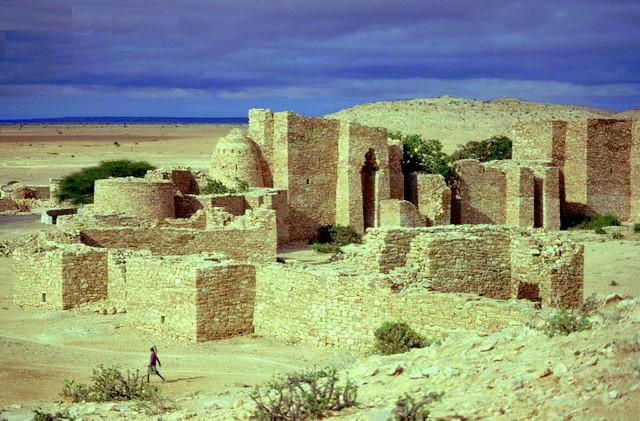
The Taleh Castle consists of a group of structures built around several tombs. As part of the historical town (also called Taleh), this castle is one of four fortresses that were bombarded by the British Royal Air Force in 1920.
Both Puntland and Somaliland had nominal influence or control over Taleh and its environs as of September 2015. The town served as the capital of the pre-independence Dervish movement.
11- Duwisib Castle in Namib Region, Namibia
This castle, situated in the semi-arid hills of southern Namibia, is reminiscent of European architecture because it was constructed by a German army captain named Hans Heinrich von Wolf.
The famous German architect Wilhelm Sander was hired by Wolf to build him a castle after he served in the German-Nama war and returned to Namibia in peacetime with his new bride.
It is believed that he died from wounds he sustained in World War I in 1916 and that his wife abandoned the castle after failing to return to Namibia after the war. Since then, the castle has been owned by the government since 1979.
12- Goree Castle in Ile de Goree, Senegal
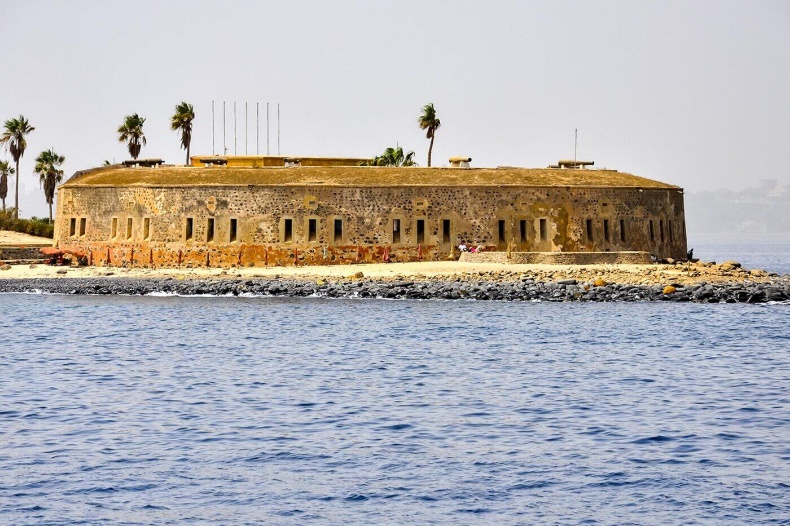
There is a dark history attached to the island of Goree and its castle, which can be found four kilometers from Dakar, the Senegalese capital. Approximately 15 million people were forced through the “Door of No Return” in the House of Slaves on the east side of Goree during the West African slave trade.
With the decline of the slave trade from Senegal in the 1770s and 1780s, the town became a major port for shipping peanuts, peanut oil, gum Arabic, ivory, and other “legitimate” goods. In 1978, it was one of the first 12 sites in the world to be declared a World Heritage Site by UNESCO.
13- Fortress of Sao Miguel in Luanda, Angola
Sao Miguel Fortress illustrates the history of Angola, beginning with its years as a Portuguese colony. Angola’s Museum of the Armed Forces is located in the Fortress of Sao Miguel and was built in 1576 by Paulo Dias de Novais.
A major outlet for slave traffic to Brazil, it became the administrative center of the colony in 1627. For many years, the fort served as a self-contained town protected by thick walls encrusted with cannons. A mural painted on ceramic tiles tells the story of Angola from ancient times, and looming statues honor Portugal’s first king, the first European to reach Angola, Diogo Cao, and explorer Vasco da Gama in the courtyard.


